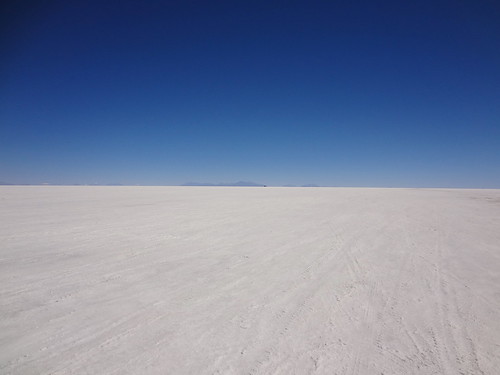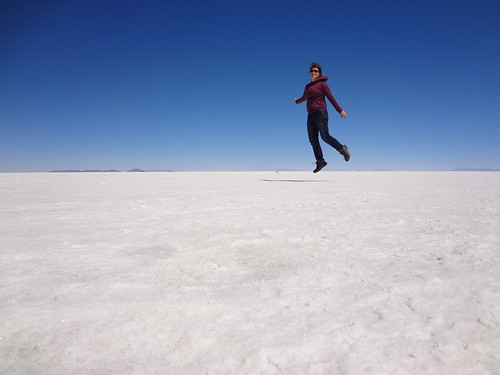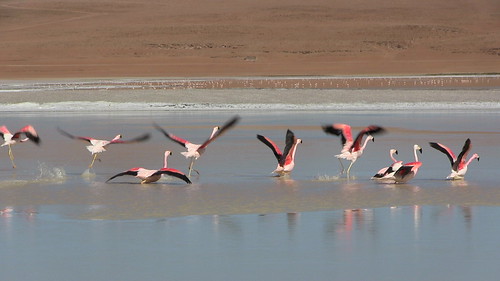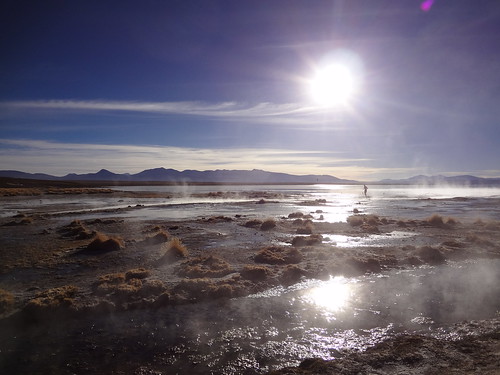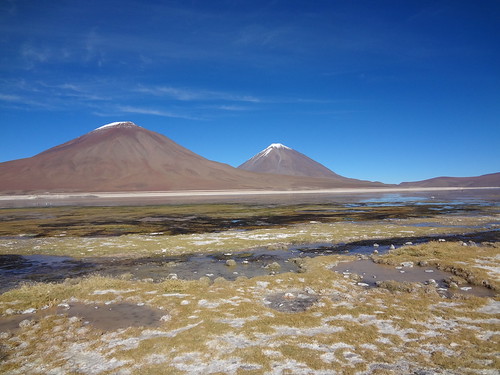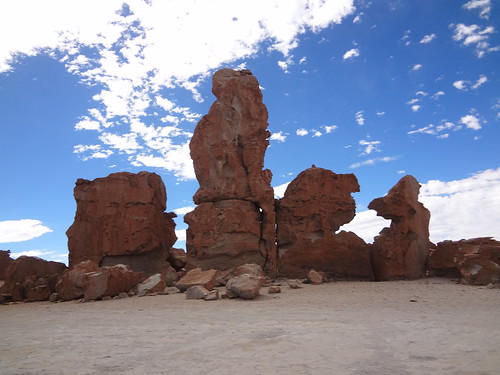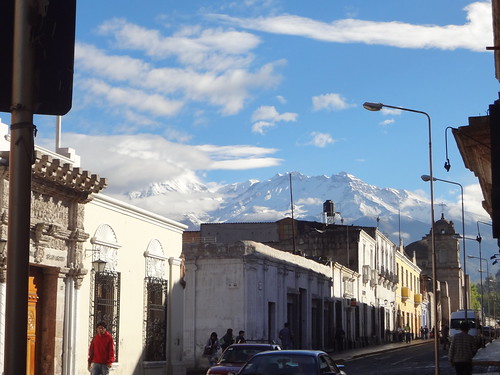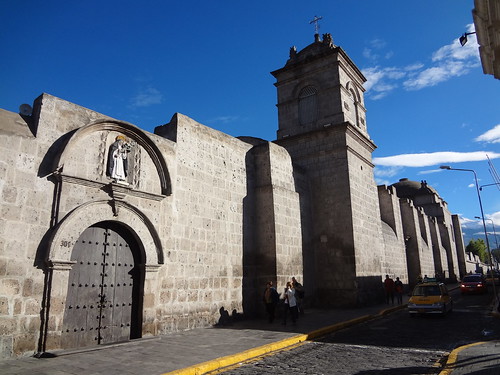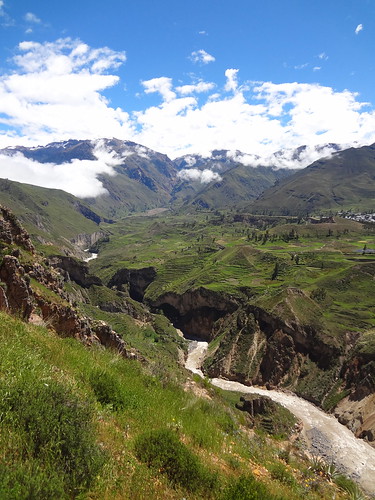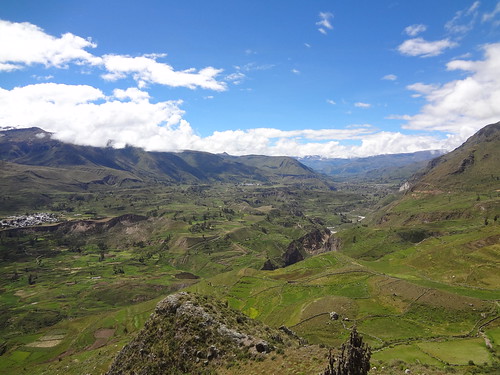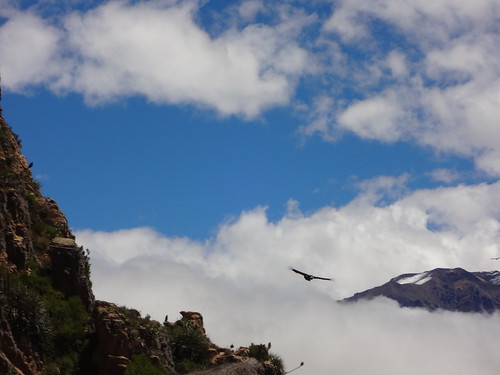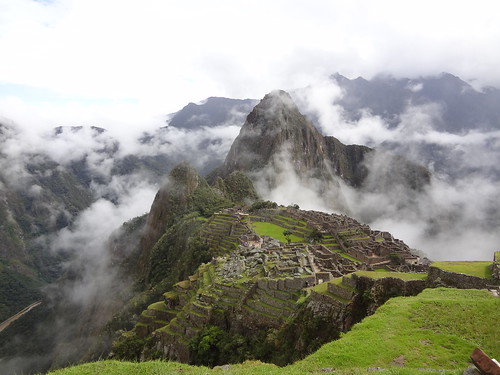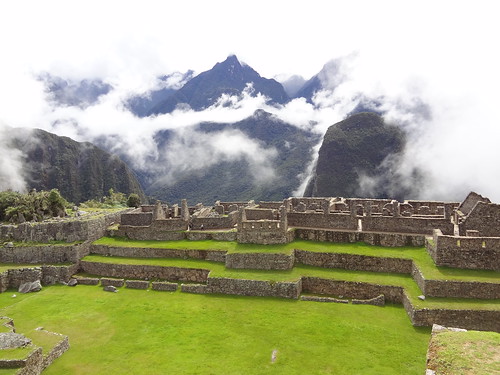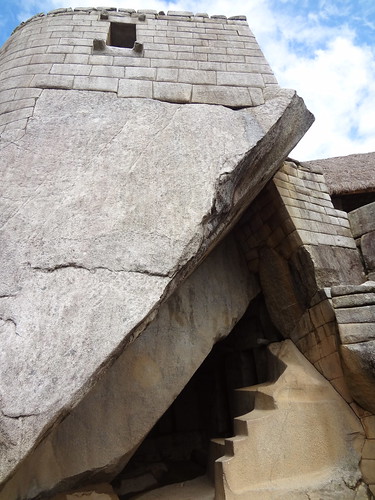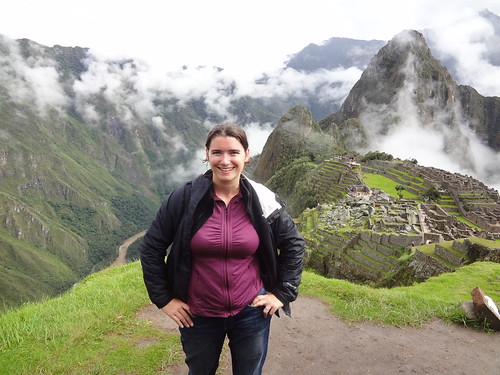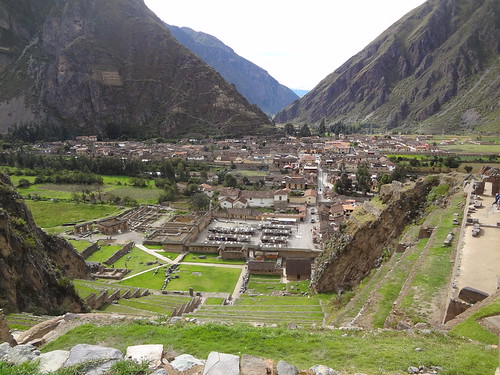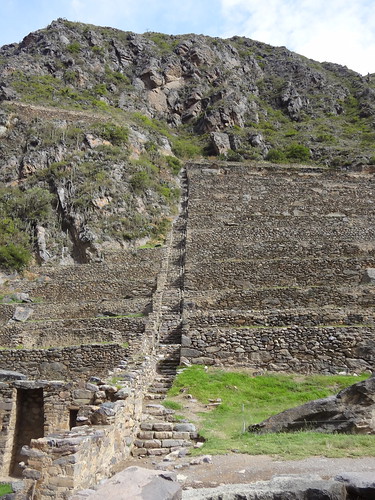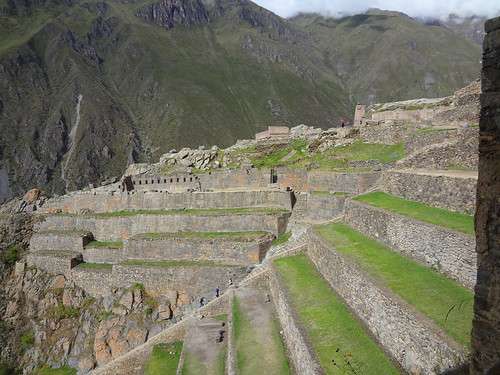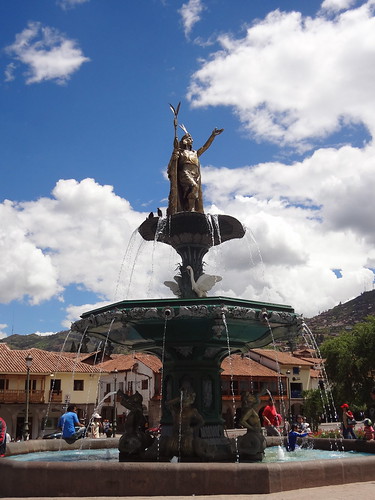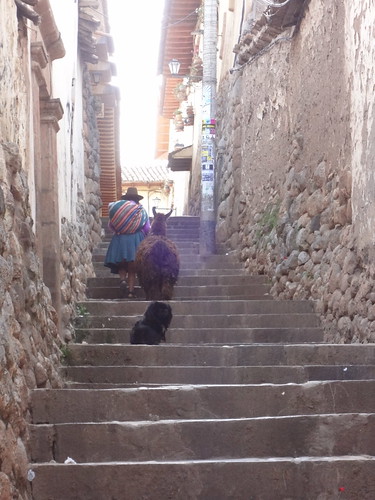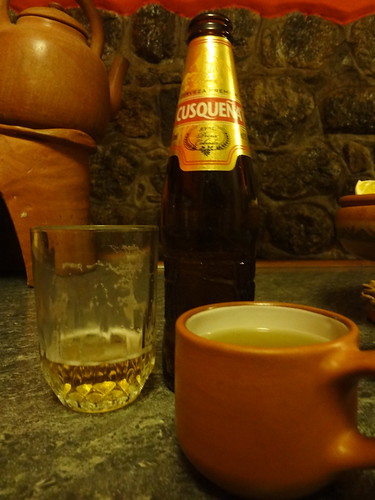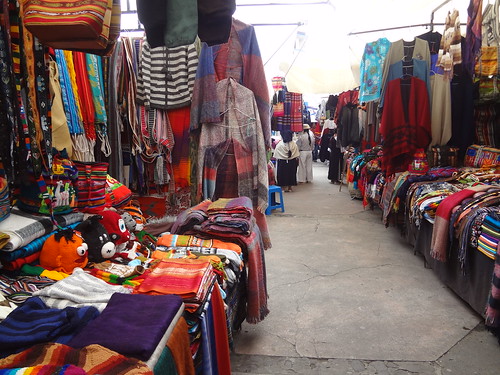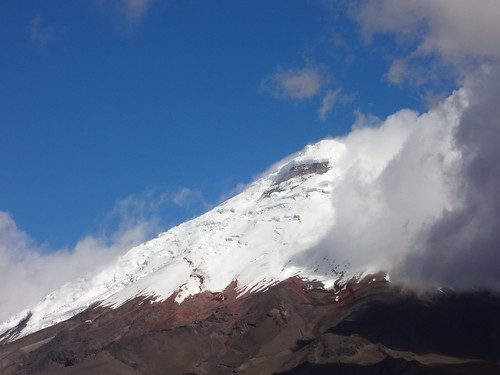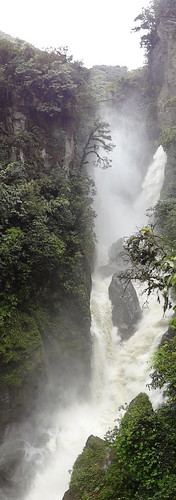12,500 ft (3810 m) above sea level, straddling Peru and Bolivia, is Lake Titicaca - the highest navigable lake in the world and the source of most giggling among young Geography students*.
About 60% of the lake is in Peru, 40% in Bolivia. Which, my Peruvian guide told me, spawned the phrase "Peru is titi, Bolivia is caca" (cue the giggling again).
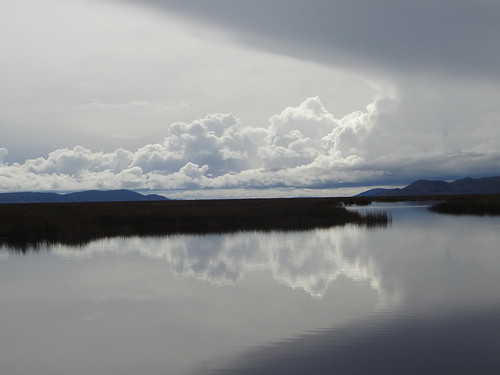 |
| Lake Titicaca |
From Puno, Peru, you can grab a boat tour to the Uros Islands, made from the tortora reeds growing in the lake. The original Uros tribe built the floating islands to escape from their enemies, but now, the two thousand people living there welcome outsiders, specifically tourists.
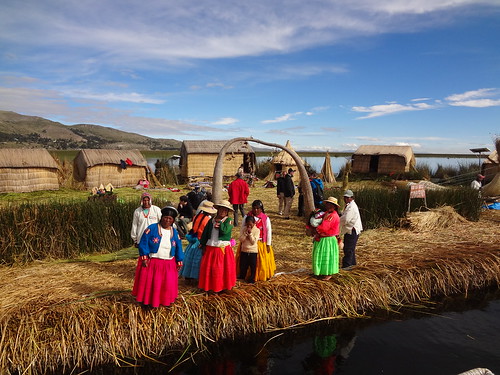 |
| Uros floating islands |
There are 60 different floating islands, each with separate communities all wearing traditional clothing and speaking Aymaran. The islands need constant maintenance, with fresh reeds on the ground, otherwise they rot and sink. Walking on the layers and layers of reeds that constitute the islands gives new meaning to the phrase "a spring in your step" - it is quite impressive that the smaller Uros children, who almost bounce off the floor, don't bounce into the lake.
 |
| floating island community |
The islands aren't very far from Puno, only about 30 minutes by boat. But they still have their own schools, and hospitals and at least three different religious buildings - Catholic, 7th Day Adventist, and
Mormon. The islanders often have their own speedboats to get them from place to place, but for the tourists, they break out wonderful boats made from the same tortora reeds as their houses and their islands. For 10 soles, the islanders will row you slowly around the neighborhood - definitely one of the best ways to experience this community.
 |
| Uros boat made from tortora reeds |
From the Uros islands, it takes two hours by boat to reach one of the biggest islands on the Peruvian side of the lake - Isla Taquile. It is ludicrously bucolic, no cars, no motorized vehicles of any kind, just sheep and cows and farmers. Most of the island is terraced for agriculture, but at the very top, around 13,000 feet or 4,000 meters, they have a village with several shops, a couple of restaurants, a church and a town hall.
 |
| looking out from Taquile |
There are six different farming communities on the island, all separated by a stone arch. Every three years, three of the communities will let their fields lay fallow and help the other farmers for free. Then after three years, they switch. Communism!
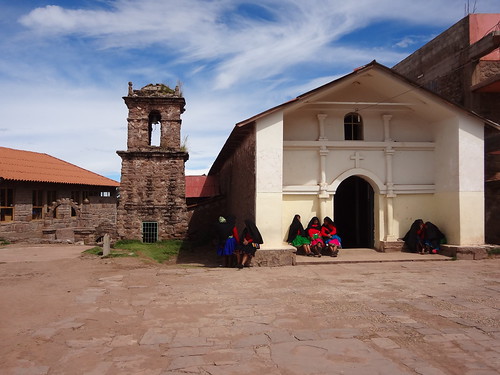 |
| main village of Taquile |
The people wear traditional spanish peasant dress, the women in layers upon layers of skirts with black headdresses, and the men with black trousers, woven belts and different colored bobble hats that delineate their marital status - red for married, white and red for single.
 |
| Taquile men |
Taquilenos all speak Quechuan, because apparently the Incans sent a bunch of Quechuas to Lake Titicaca as part of their colonization technique.
But almost everywhere else on Lake Titicaca, the population is Aymara, including on the most famous island, the Isla del Sol in Bolivia.
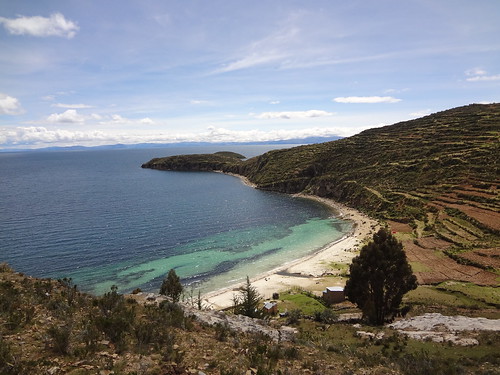 |
| Isla del Sol |
Incan legend says that this was the birthplace of the first Inca and the sun god. But the guides are absolutely adamant that what you see here sprang from the Tiwanaku empire, which existed before the Incans.
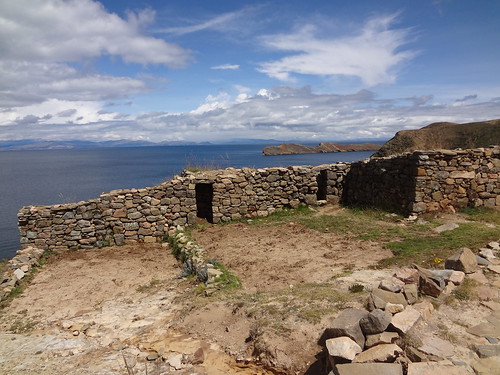 |
| Chinkana ruins |
Some say that the lake itself is named after this island, that "Titicaca" is a variation of "Titikala", the sacred rock on Isla del Sol. "Titicaca" apparently means "head of the puma", and either the rock or the lake itself is said to look like a puma. Though how pumas, which could never have survived on Isla del Sol (too small, no prey animals) became important enough in island symbolism to represent the whole lake isn't clear to me.
 |
| Mesa de Sacrificio |
On the north of the island, there are several ruins aside from the sacred rock, including a sacrificial table and the Chinkana laberinto. But lest you forget that Isla del Sol is primarily an agricultural community with tourism as a sideline, there are plenty of furry reminders nibbling around the archaeological sites.
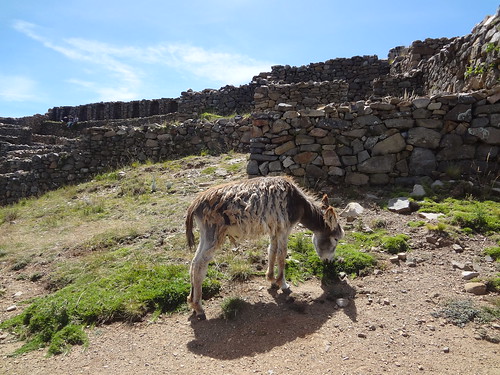 |
| burro de las ruinas |
Even though the sun was appropriately shining the whole time I was on Isla del Sol, and most of the time that I was on the rest of Lake Titicaca, it is still REALLY high up, and therefore pretty damn cold. I was wearing three layers, but most of my (smarter) fellow boat passengers were wearing scarves and gloves and antarctic-worthy jackets. I, and my chilblains, highly recommend the latter.
* purely speculative data based on author's own childhood
